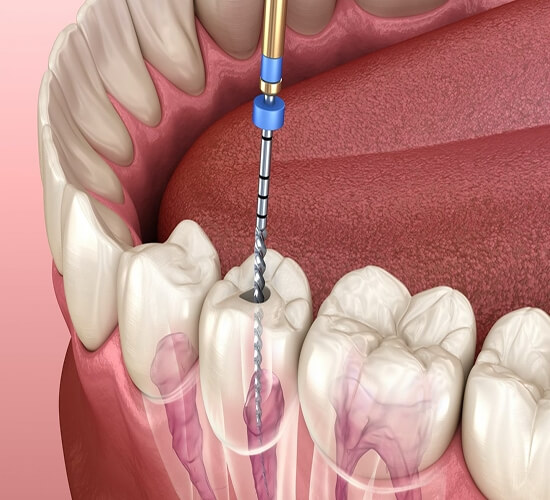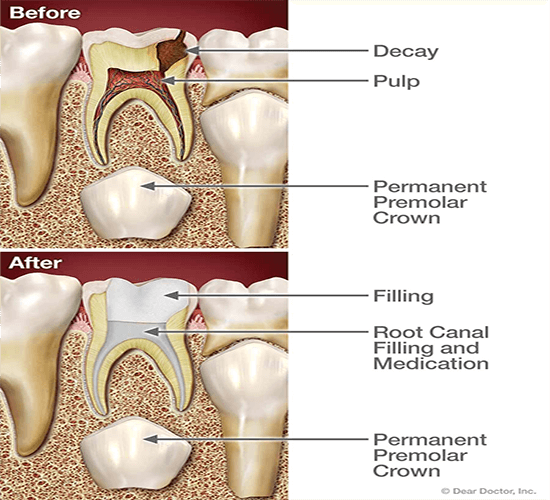
Root Canal Treatment
Root canal treatment is a safe and effective way to stop many kinds of tooth pain, and to keep a tooth from being lost due to decay or injury. But if a root canal is recommended for your young child, you may wonder why: Isn't that baby tooth going to fall out in a few years anyway? That's true — the primary (baby) teeth typically are shed between the ages of 6 and 12 years. Yet there are some good reasons for trying to save baby teeth for as long as possible with root canal treatment, rather than simply extracting any that are damaged by trauma or infection.
For one, primary teeth have the same functions as adult teeth — and a missing tooth at any age can cause problems with speech and eating. Baby teeth also have another important role: They serve as guides for the proper placement of the permanent teeth. Without primary teeth to guide them in, permanent teeth tend to emerge in a crooked fashion, often becoming tilted or crowded because of inadequate space. This can result in bite problems that may require extensive orthodontic treatment later.

Unlike its hard outer surface, the soft pulp inside the tooth is rich in blood vessels and nerves. Problems in this area are often signaled by tooth sensitivity and pain. When we find these symptoms during an examination, we generally use radiographs (x-rays) to confirm that the pulp is diseased, or dying. That's when we need to take action, before an abscess or further infection can develop.
In severe cases, the tooth may need to be removed, and a space maintainer installed to fill the gap. But many times, space maintainers don't fully restore the tooth's functionality. Plus, they are susceptible to coming loose and must be monitored constantly. If possible, we prefer to use treatment methods such as:
Indirect pulp treatment If pulp damage is minimal, it's possible to remove most of the decay (but not the pulp), apply an antibiotic, and then seal the tooth up again; that's referred to as an “indirect” treatment.
Pulpotomy Alternatively, if decay is limited to the upper portion of the pulp, we may recommend a “pulpotomy.” This involves removing the damaged part of the pulp, stabilizing the remaining healthy portion, and then disinfecting and sealing the tooth. This “partial” root canal is a time-tested technique that's successful in many cases.
Copyright © 2021 Grin is proudly created by HiBootstrap
